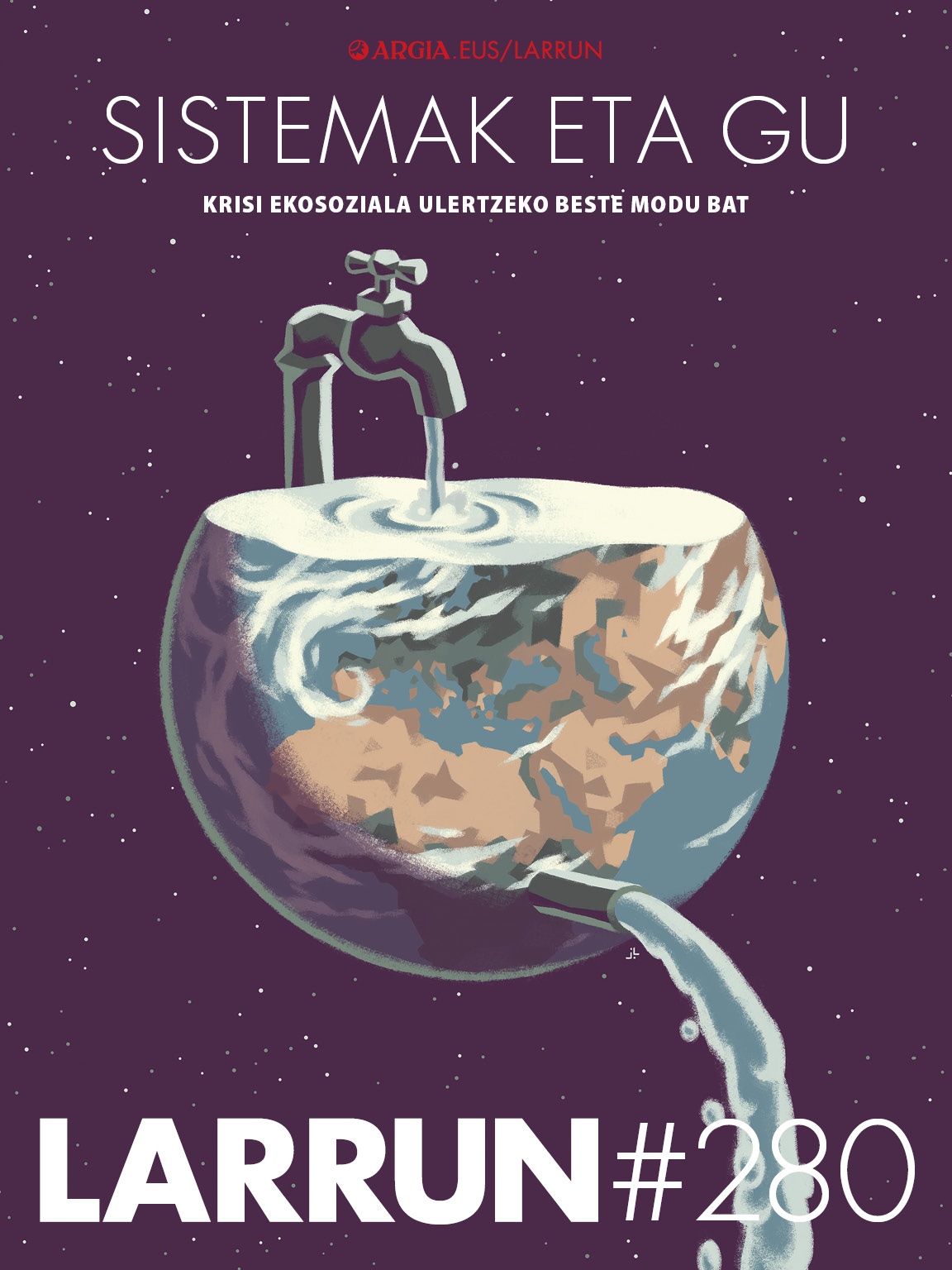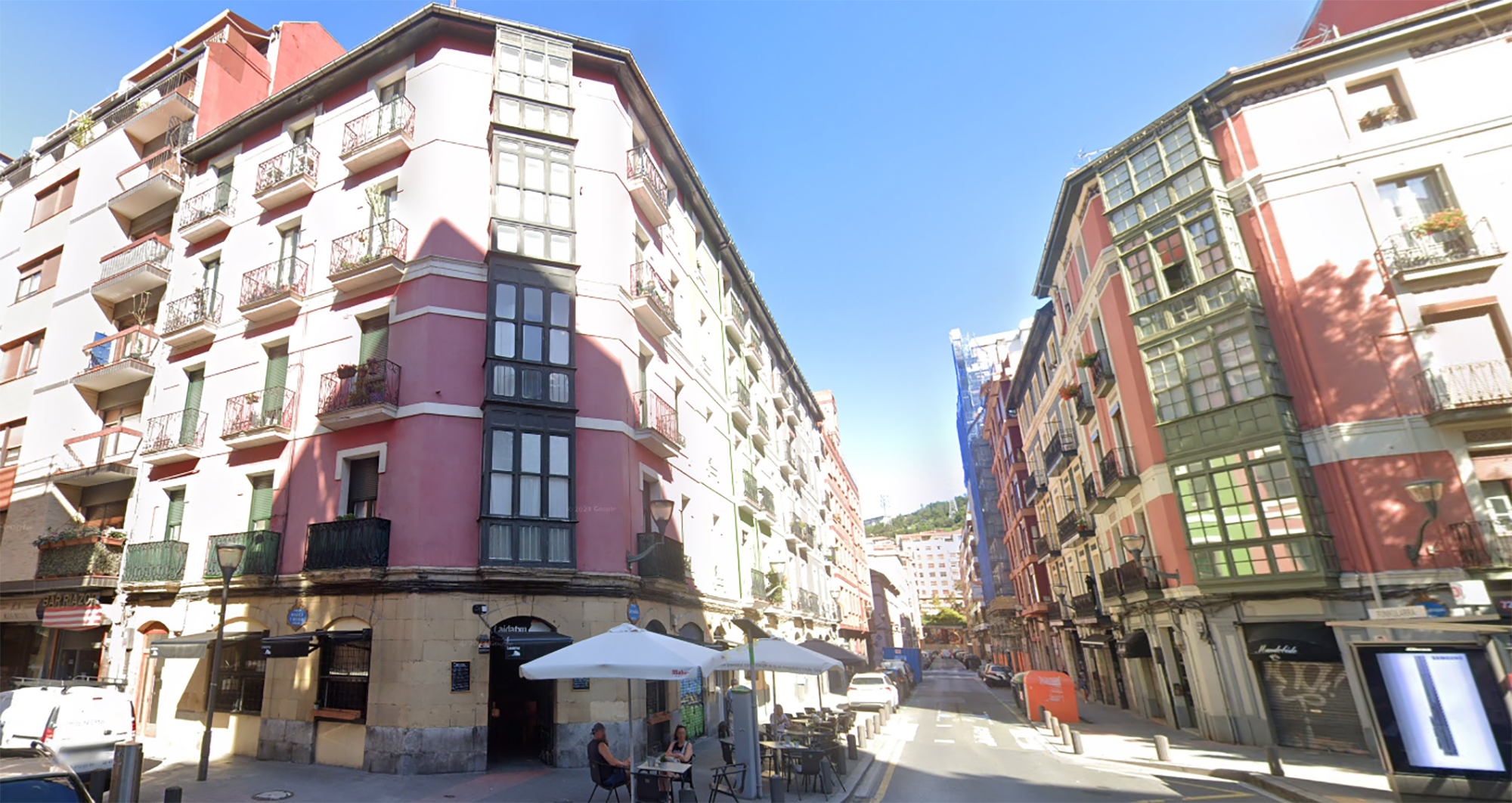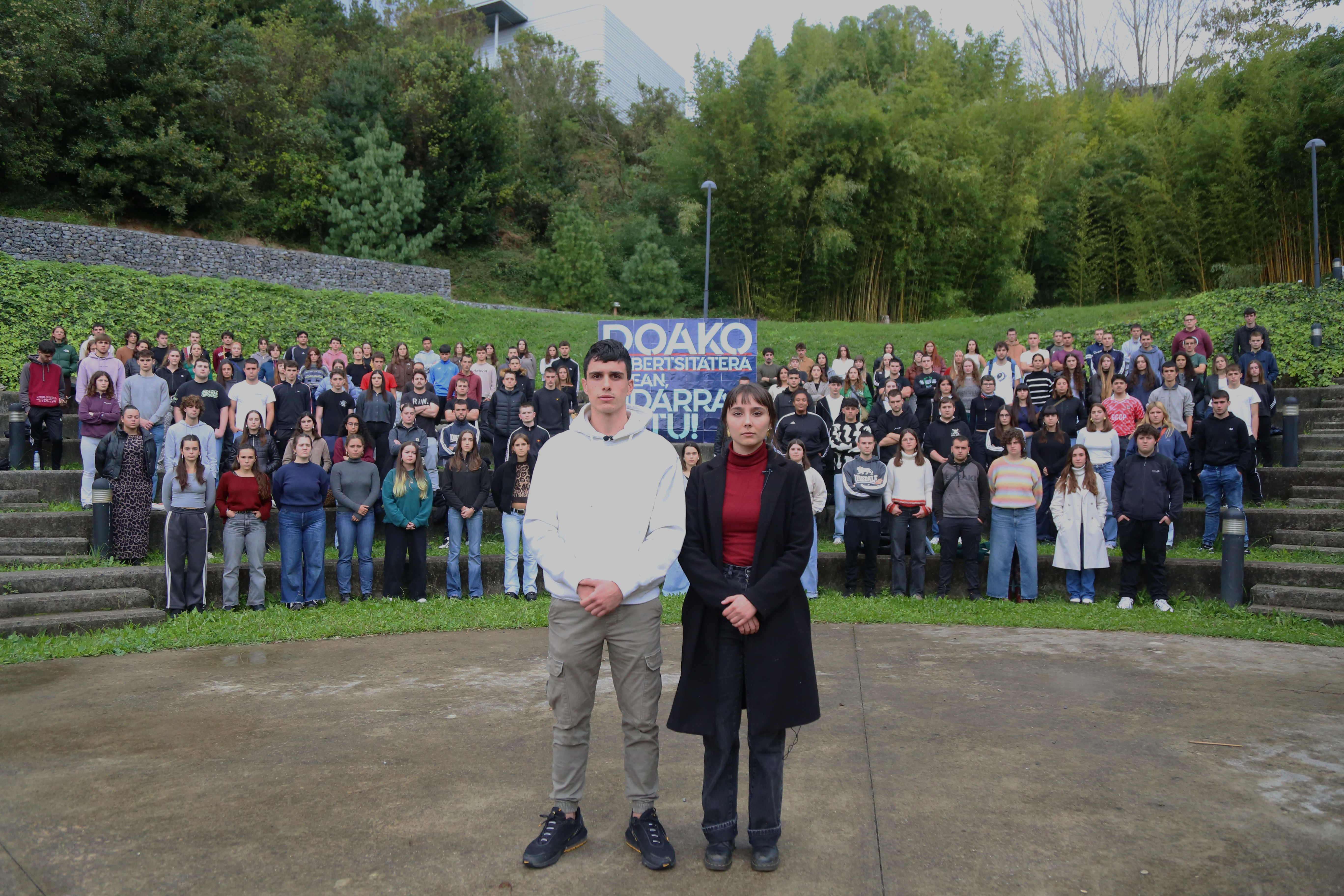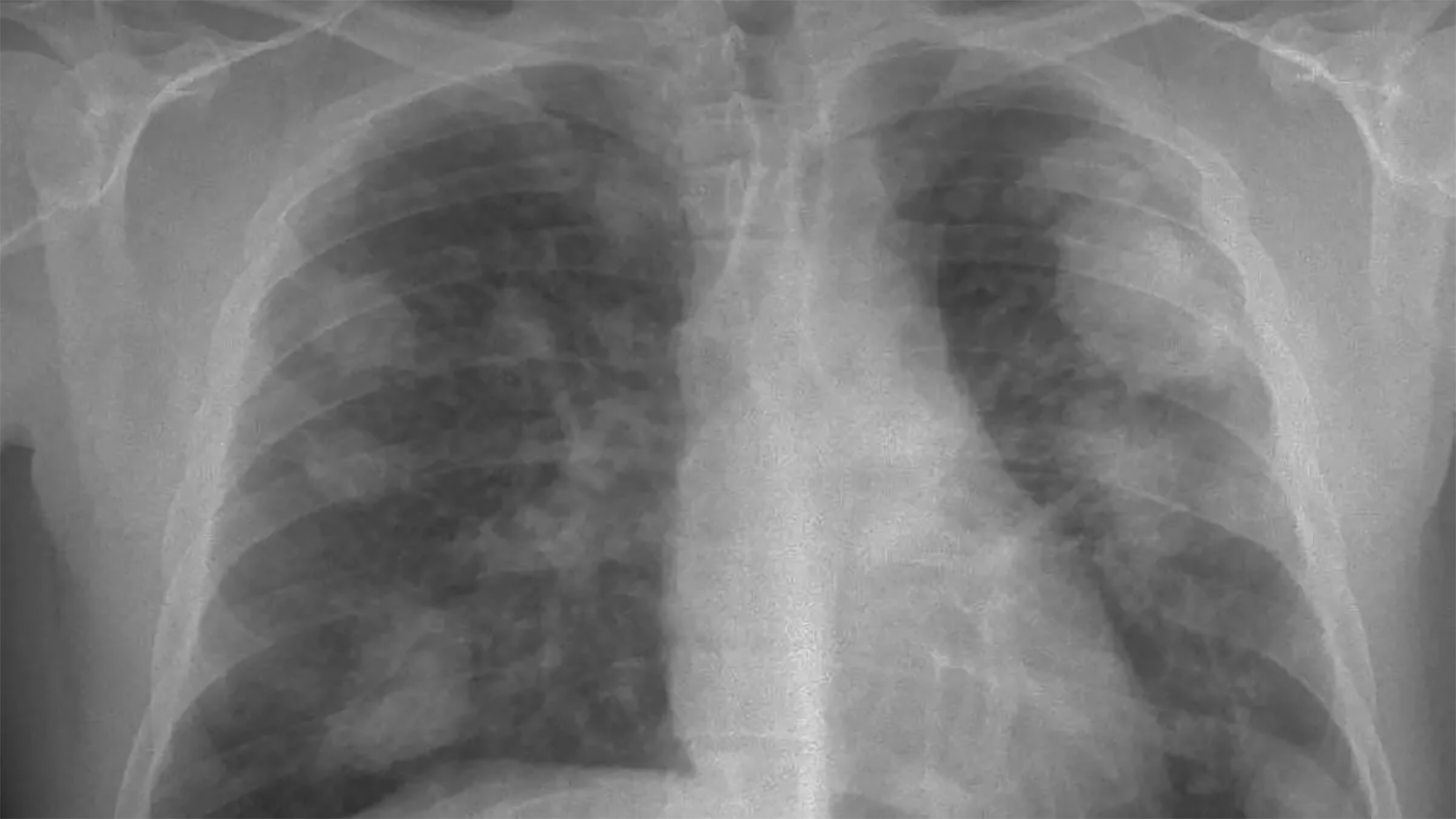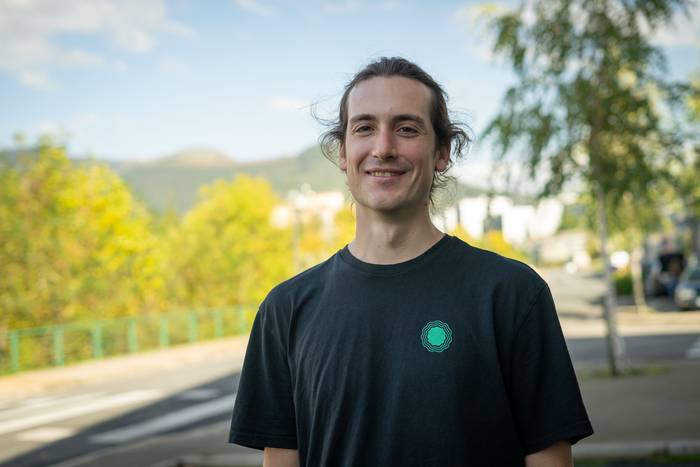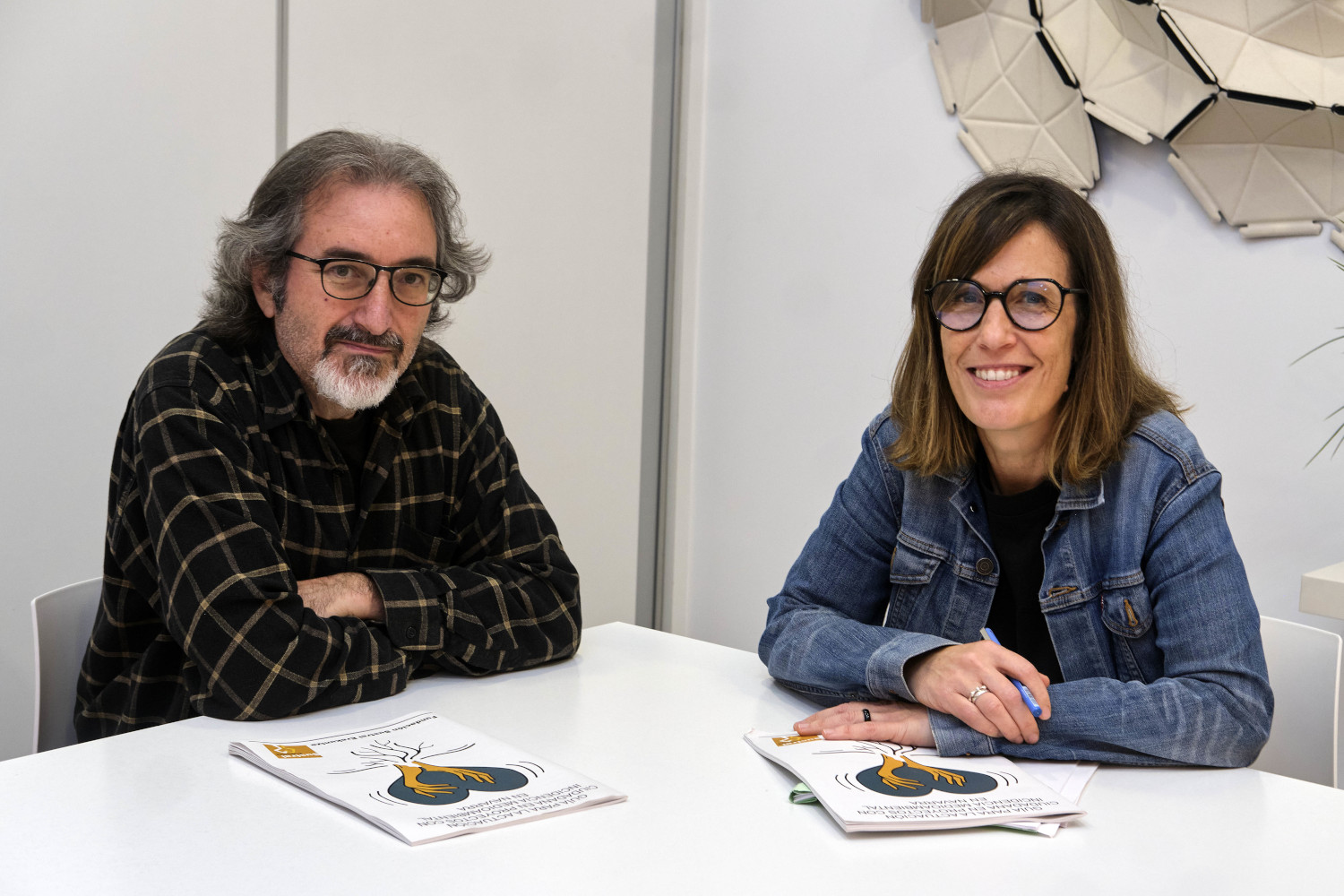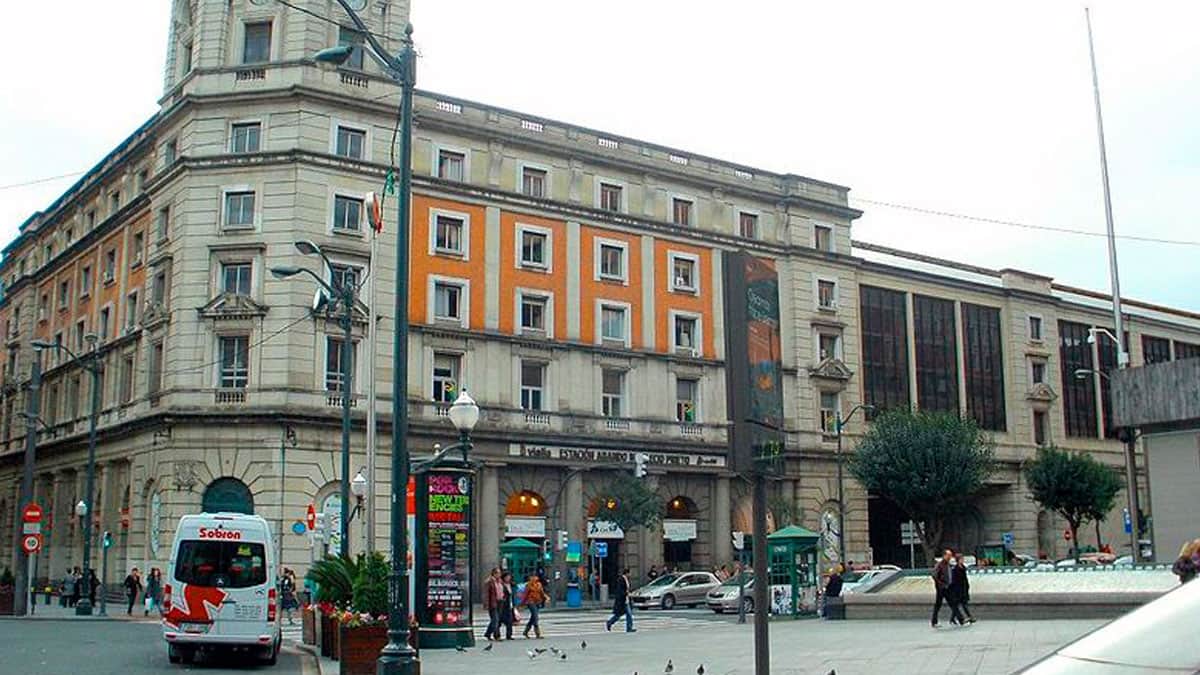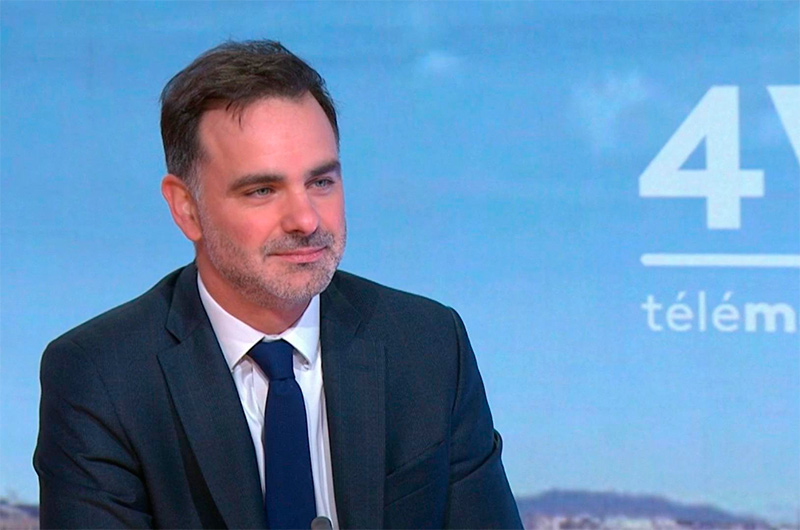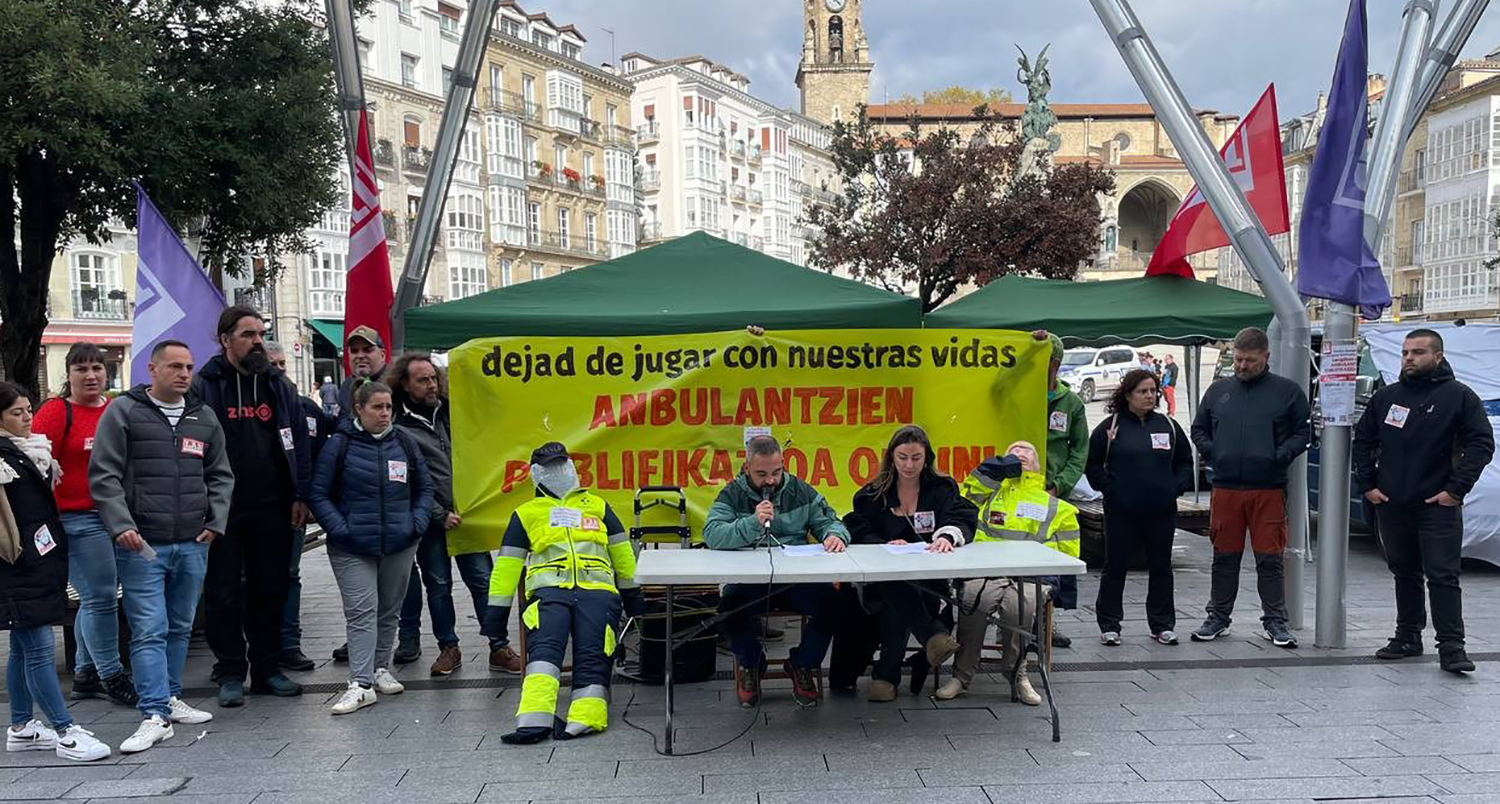Systems, eco-social curves of the world
- In a changing and unsafe world, every step we take has its influence. We are surrounded by complex systems that relate to each other at home, in school, in the factory, in the plaza… and its functioning generates complicated curves, as simple but complicated as breakfast coffee comes out in a torrent of the Italian machine. Systemic thinking was born in the 20th century to understand the modus operandi of these systems that surround us, analyzing together the relationships between the elements they internalize. Donella Meadows (1941-2001), a U.S. environmental scientist, outlined the basic notions of this thinking in his book Thinking in Systems, and his work has now gained more strength than ever when economic, ecological and social crises are very evident. Instead of just looking at the concrete consequences of each such dark event that accustomed us to the newsstands, whether a glacier has melted completely or inflation has risen again, it's about putting the spotlight on the whole structure behind it and looking at how it interacts with other systems to try to figure out what has caused the problem and how to fix it. Maybe that's how we can start to change the world, as Meadows wanted to do.

What we have to do is gradually increase the maximum pension and at the same time increase the contribution at the maximum base. If we do so gradually and slowly, as we expect, this has a virtuality from the perspective of the sustainability of the pension system, which will increase the collection in terms of social contributions.” This was collected by the newspaper Diario de Noticias José Luis Escriva, Minister of Social Security in Spain, at the time we were doing this LARRUN. And perhaps the proposal by the Spanish authority – to make the sack bigger first we have to comply with it – seems logical if we do not know the near history of the public pension system, and if we do not know that behind there is a complete plan for reorienting workers to private pensions, as the economist Miren Etxezarreta (1) has denounced. Since the 2011 reform came about, pensioners have lost purchasing power, especially those receiving widows, and although in Hego Euskal Herria they account for 24% of the population, only 11% of GDP is earmarked; moreover, according to the latest data from Gaindegia, about 40% of pensioners in the Basque Country receive a minimum dignified pension (EUR 1,080).
The problem is that Escrivá and the others still think that the pension system is a closed and linear circuit: if in 2023 I have so much, in 2035 so much… Without considering that there are many other variables that relate to this system. Thus, the dramatic increase in the price of the basket for inflation has outweighed the rise in the CPI promised by the Spanish Government in pensions, and the Basque Country Pensioners’ Movement went out into the streets this autumn in favour of a “real CPI”.

According to systemic thinking, all these variables must be taken into account if the system is to work. You can't look at a single sack of money thinking that the problem is there, because it's like a tree that doesn't allow us to see the forest. That is why it makes sense to shout “change the system and not the climate” or to say “the problem is not motherhood, the problem is the system”, but at the same time we should analyze how this system is composed, understanding its behavior and identifying the points of influence to change the system itself. This is what systems theorists propose. But where does that theory come from? Let's make a little history.
General Electric at source…
In the 1950s, the managers of the powerful American multinational General Electric (GE) were completely surprised at what was happening at the household appliance production plant they had in Kentucky. The factory started picking up in Louisville in 1951 and was a gigantic building of 400 acre or acres. Appliance Park was baptized with a poncho. In the United States, the consumption and demand for household appliances grew enormously, as, after the Second World War, the holding of these appliances at home reflected very well the change of life of the American middle class. But in GE's economic accounts, something didn't square: they realized that the employment of the Kentucky plant was ups and downs, three-year cycles, namely -- thousands of Appliance Park workers, who in 1973 reached 23,000 people. This did not fit in at all with the times of growth and the economic cycle they were experiencing.
Faced with the impossibility of reconciling the problem they had in their hands, during that decade the company was in full internal restructuring, not only in the nuclear business, but also in electronics, so that there was a kind of internal competition, they hired a computer engineer. Not to design turbines or tents inside appliances, but to know what was happening with employment. This computer engineer was Jay Forrester, father of the theory that explains "system dynamics."
A reservation can be the population of your town, the number of books that have been for sale at the Durango Fair or the money that Kutxabank has in its deposits. And reserves vary over time through flows.
Born in 1918 in a farm in Nebraska, the family’s agricultural business improved Forrester’s inspiration for many years to enter the world of “complex systems”, where a small wind farm was also built to supply the farm with energy. After the Electrical Engineering studies he joined the Massachusetts Institute of Technology (MIT) to, among other things, design digital computers to deal with “nonlinear problems.” It was commissioned by GE and did not give up the challenge. Simulating the rules of informatics in the organization of the Louisville plant, he observed that in the summer the energy demand was higher, so that later more people were hired that were not “necessary”… That is, the internal structure caused fluctuations in the jobs and not external economic cycles.
This simple conclusion, which seemed logical and evident, was the one that launched the Theory of System Dynamics. Over the next few years, MIT students delved into this theory, applied mainly to industry and business management. But in the 1960s and 1970s, it extended to other areas, like the Boston urban model. In 1970, the Club of Rome invited Forrester to its assembly. This club brought together researchers and scientists who at the time were concerned about the global problems of the world. Hence the first draft to explain the world socio-economic system, in which concepts such as “recycling” appeared for the first time, later elaborated by colleagues at MIT, including Donella Meadows, an environmental scientist and environmentalist. Coordinated by the latter, and at the request of the Club of Rome, they conducted a study to explain the evolution of population, industrialization, pollution or food production in the world, and published their results in the well-known report The Frontiers of Growth in 1972.
The main consequence of this work was that if the world today continues with the same levels of population growth, production and pollution, we will reach the absolute limits of the Earth in a hundred years. Since then, Donella Meadows’ trajectory (see his biography in the last painting) was closely linked to environmental and social analyses based on systems theory, but above all by his ability to disseminate them.
.jpg)
Limits of Growth', including Jay Forrester, second from left to left, as creator of systems theory. (photo: Donella Meadows Foundation)
Slinky and look
When he taught classes, he taught his students the essence of systems theory with a simple and illustrative example. On the first day, Meadows had the habit of carrying the toy called Slinky, a spiral pier that made strange movements, able to go down just a few stairs or perform repetitive moves up and down. The professor placed Slinky on the palm of his hand and grabbed with the two fingers of the other hand on the upper side, took his hand off and like a yo-yo with the toy down and up hanging from his fingers: “What has caused the pier to be up and down that way?” he asked the students: “Hands? You've taken it below," his answer. He then repeated the same movement with a cardboard box to store the Slinky, holding it up with the two fingers and removing the lower hand with a cut motion. Of course, nothing happened. “Now I’m going to repeat the question...” It is clear that the answer lies in Slinkyan itself and not in the hand, which only activated the behaviour of the device itself.
According to Meadows, when we discover this relationship between the structure and behavior of a system, “we can start to understand how systems work, because sometimes they have negative effects and because if we change we can get more positive behaviors.” This is a way of thinking that helps us identify the center of the problem. Have you heard on the radio that the local shuttle service is interrupted by the works of the San Sebastian train station on a rainy Monday? It may not be the fault of the women at the window, or the workers who have worked at night, because they have been delayed in their tasks, although Adif will tell you that the delay is by “incidence” of your Twitter account. Perhaps what conceals this error is the laxity of recent years in the conventional rail network of Renfe, because the Government of Spain has allocated most of the budget to the construction of the APR infrastructure (3). Or the working conditions of those workers who may be subcontracted have something to do with it, because they exploit endless hours in exchange for ridiculous wages. Whatever the disruption of a rail service, such as the coincidence of the public pension system, the key lies in not focusing on the “impact” or the concrete source of income throughout the structure. Look at the Slinky instead of the hand.
.jpg)
toy does not move his hands, but the form and behavior of Slinky himself.
With this practical example from Slinky, Meadows wanted to start a book that summarizes systems research for a lifetime. In 1993 he had already drafted the text, but could not publish it and in 2001 the American died. Years later, in 2008, his colleagues at the Sustainability Institute decided to order and publish his paper under the title Thinking in Systems (4): “Right now, when oil is over and we have to face the harsh reality of climate change, Meadows’s theses are back on the front pages of the newspapers,” says Diana Wright. We've largely taken this book as a basis for making this LARRUN that you have in your hands.
What are systems?
A system is not a “mere collection of things”, it is not the sum of several parts. A system is the set of interrelated elements, organized in a coherent way to achieve an objective. The digestive system is a system, also a football team, and capitalist society or planet Earth itself are systems to give examples further away. But, for example, the randomly awakened sand on the road is not a system: “You can remove or put more sand and you will have the same thing: sand on the road,” says Donella Meadows.
According to Donella Meadows, when we discover the relationship between the structure and behavior of a system, “we can begin to understand how systems work”
In fact, all systems have a “function” or objective, but they are often not easy to detect: “If the frog turns left and captures a fly, then turns right and eats another fly, and then turns around and hunts a third party, the frog’s goal is not to turn left, right or backwards, but to hunt flies.” The same conclusion can be drawn from many of the situations we find each day in front of our eyes.
We can see this with the behaviour of the employers in the strike cycle that the workers have been carrying since June in the metal of Bizkaia. Since the beginning of the negotiation of the sectoral agreement on the territory, FVEM, an association of metal entrepreneurs in Bizkaia, has refused to accept the main demands of the workers. Trade unions call, among other things, for a wage increase in line with the CPI and for progress in subrogation and reduction of working time. But even though the employers have repeatedly sat at the negotiating table, they have never offered more than 6.5% increase, which in practice would mean a reduction in purchasing power for workers, with inflation as it is. In the mass paros convened in October and November, where 56,000 people work in Bizkaia, the continuity was around 85% according to the unions, LAB, CCOO and UGT on the one hand and ELA on the other. With the support of this show of strength, the opportunity to reach an agreement was opened on 25 November, as FVEM sent them an email saying that it had a “negotiation proposal”. But once again, the employers put on the table an option that does not guarantee the increase of the CPI… “It has staged a farce,” CCOO said clearly. If the FVEM carries the same or similar proposal at
each meeting, what is its objective? It is clear that reaching an agreement is not. But sitting at the negotiating table can justify their image and call the unions “irresponsible” for maintaining the call for strike. The employer, therefore, seems quite the opposite: instead of offering better conditions to workers, weaken their fight. He wants to hunt fly. This is one of the subjects of system dynamics: “True intentions can be detected from behaviors and not from rhetoric or statements made”.
.jpg)
Foku / Monica del Valle)
One of the main objectives of a system is to ensure its survival. A plant spreads seeds to grow more. Ants have a full organism in the ants to protect their ant mother. And also a company, whether it's a transformative cooperative or a public limited company based on the cannibalistic laws of the market, has every year its runs and mechanisms to listen to the quota. What happens is that sometimes these mechanisms are not so “mechanical”. Because a system can be something immaterial, not physical, conscious, social. How is the economy. Blow to human narcissism
“Economics is a social science,” wrote Spanish writer and economist José Luis Sampedro 40 years ago. “Economic knowledge, without a social perspective, will not be an instrumental resource.” In the blog Esparragos y Target de Oscar García we can read Sampedro's mentality about it. He says that conventional economists have forgotten that a machine, like a watch, is not like an animal, like a cat, because the latter has behind a “society”: “Clockwork training is a mistake by many current economists to work in the social field,” Sampedro said. Four decades later, universities continue to teach the market from rationalization, as if there was an invisible hand leading homo economicus. But the economy cannot be studied without its axiological components, that is, without those ideas behind it, although that leads us to work a more difficult, less precise and often incomprehensible path.
Why do we count all this? the reader asks. Because Meadows had a kind of thinking about systems. Our analyst said that dynamic systems are so complex that, although we can understand them in general, they are also unpredictable and uncontrollable: “We will never be able to fully understand our world, at least in the same way that restrictive science has made us wait,” he wrote in his book. This characteristic has been widely highlighted by the authors of Meadows’ work: their humility and the choice of not seeking absolute answers to the complexity of the problems.
.jpg)
In the journal Ecologista, for example, members of the team of Plastic Cero Lanzarote (Canary Islands) published an article on the image of the American (5), and say that their ideas are “a fourth blow to the narcissism of humanity”. In the past, there have been three new blows on the human situation, as the psychoanalyst Sigmund Freud explained in 1917: geocentrism – which proved that Earth is not the center of the universe – anthropocentrism – Darwin’s theory of evolution proved that the human being is another animal – and egocentrism – Freud himself said he is not the owner of his consciousness. According to the authors of the article, the goal is for the current “predatory” economy to grow continuously, “even if it has to create needs, sell desires, ignore complexities and avoid accepting the limits of the Earth.” By their image, technological solutions or through technolatry, they want to get us out of the social sphere, making us believe that we will be able to colonize another star: “There is no better way not to see it as we are in the mirror than to hide behind a screen,” they say. Meadows proposes looking directly at this mirror.
If we have breathing difficulties, we're told to do a chest MRI, regardless of whether the problem can be neurological. Actually, it's really hard to know where the boundaries of a system are.
A world in the bathtub
So far, we've tried to explain what systemic thinking is, but what is it composed of? In his book, Meadows says that the essence of a system is the reserve; as the word itself says, it is a kind of warehouse that can be touched, counted or seen. A reservation can be the population of your town, the books that have been for sale at the Durango Fair or the money that Kutxabank has in its deposits. And stocks vary over time through flows. For example, you usually put a bathtub: the water in the bathtub is a reservoir, and the fluids entering or leaving the tap are flows. Easy not? “Therefore, a booking is a memory that shows the history of changes in system flows.” That is, we can analyze how many books have been produced in Durango and how many have been sold or how demography has been dynamic.
History of Basque whales
In analysing the exploitation of biological resources in the world, systems theory takes “reservations” into account. These reserves can be renewable – water, grass, wood… – but misuse can stop being renewable and completely depleted.
Donela Meadows sets the example of fishing: the rate of fish regeneration is not continuous, it is also conditioned by the number of existing fish (if there are fewer fish, there will be more food and space for them at sea and the population will grow faster). According to this, when fishermen catch a lot of fish, the fish left at sea have the opportunity to regenerate more easily. Moreover, although catches initially grow exponentially, then the decline in fish will lead to a decrease in fishing investment due to lower economic performance. But if technological innovations – imagine a special device to sound – cause fishermen to continue to have benefits, “the conclusion is that fish will be completely destroyed, even
the fishing industry itself: the sea would be the same as the desert.”
You don't have to go to theory to see that something like this has happened to us and to water. The fishermen of Basque whales sent the species Eubalaena glacialis, sardinian whale away from the Cantabrian coast because of the catches. But thanks to naval innovations, they went to Newfoundland, and they continued to capture almost extinction. The counterpart was to lose fat that was worth gold.
According to recent data from Saretzen, a project launched by EiTB and Tokikom, Bilbao is the only city in the Southern Basque Country that has lost population in the last twenty years (-1.38%), but remains the most populated urban centre. Outflows (deaths, emigration...) have been higher than those of entry (births, arrival of migrants...) and the stock of population has decreased in the old city. But it is not so simple, because it is necessary to include in this equation other variables, such as that which has occurred with urbanism when 25 years have passed since the construction of the Guggenheim, housing prices, social policies, congestion of means of transport… The opening of more or less the bathtub source, or the plugging of the hole, has its influence, and this source is called feedback loop or end of the bathtub.
There are reinforcing feedback loops that, without counterbalance, would produce exponential growth and lead the system to collapse. When the English brought a few rabbits to the Australian city of Vitoria in 1859, they caused that, without any predator, they multiplied up to 100 kilometers west of the year, being the fastest colonization of a mammal species. The same can happen with many other things: “The higher prices rise, the higher the wages so people can maintain their standard of living. And if wages rise, prices rise to keep profits…”, explains Meadows.

On the other hand, there are feedback compensating terminators that help maintain the reserve or stock at a certain level. This is the case of the domestic thermostat, as it allows the temperature not to increase more than 19 degrees Celsius. [Note: this example is only valid for anyone who can pay for heating.] Going to the imaginary of Basque music, we can say that the compensating and reinforcing loop are like the ttakun of the txalaparta and the lame: one seeks balance and the other the imbalance. So what would be the ttakun blow or the compensating vulture for the promiscuous Australian rabbits? What about increasing the price of money? The American Federal Reserve (FED) and the European Central Bank know what to do.
.jpg)
Inflation has been on the rise in the last year, and last October reached its highest point in the euro area, with an annual rate of 10.7%. In order to reduce inflation, Frankfurt is raising interest rates, in other words, it has increased the price of money. It follows the liberal dogma of reducing consumer demand and reducing prices at the expense of unemployment. In the United States they have done the same, EDF President Jerome Powell said very clearly: “We need to grow unemployment to fight inflation.”
But for many this is not a solution, not least because global debt is a tremendous burden – 350% of gross domestic product – and because that measure will lead to the loss of many families, businesses and countries. Locating the origin – or loop – of inflation. For example, it is known that since the fall of 2021 in the Spanish state electricity companies began to speculate with the energy market (6), or that the value given to work is not real, notoriously in the case of care. “We have not been impoverished by inflation, but increasingly fewer salaries we receive from our work,” wrote trade unionist Ainhoa Etxaide and ARGIA columnist (No. 2796).

System traps: gas and military escalation
Gradually we learn that systems are more complex than expected and that wanting to influence a system has consequences on other systems. We often think of linear causalities, dissecting reality in concrete facts, as analytical thinking does: if we have respiratory difficulties we are told to perform a chest resonance, without considering that the problem can be neurological. It's actually very difficult to know the limits of a system.
Take another simple example, imagine the gas crisis! The reader will have heard that we have had a problem with this fossil resource and that there has been a war next door to the house at the expense of it. Following the Russian attack on Ukraine in February, gas imported into the European Union has risen from 33% to 7.3%, also penalising Russian oil recently and paying the cuba for EUR 60 (7). Sabotage of the Nord Stream I and Nord Stream II gas pipelines has further hampered gas flow. European countries try to look for other sources, such as the supply of liquefied gas on methane vessels from EE.UU. or Qatar, or the increased exploitation of the Groning gas field in the Netherlands, but they are expensive or dangerous alternatives.
Living forests versus dead forests
In North America, white pines were always highly prized for loggers, but in the early 20th century most of the virgin forests disappeared and the bees began to explode. However, the bees were attacked by a special worm that was repaired by DDT and pesticides for decades. But after each fumigation they would come back stronger. In the 1980s in Canada, millions of euros were spent each year “controlling” the scourge and the anger of citizens was increasing by toxic substances.
Researchers found that insecticides also killed the natural enemies of the worm. Before starting fumigations, these predators (birds, insects...) controlled the worm, and although occasionally there was a large outbreak, then the population descended, apparently insufficient for so many spruce worms.
But this slow, non-linear cycle was against the interests of the loggers, a powerful Canadian economic sector. With fumigations the system changed radically and caused the male population to remain at the limit of the explosion: “If this policy fails, there will be an outbreak of worms never seen,” Canadian ecologist C. S. Holling wrote.
This example shows the potential damage that forest management can do without taking into account the entire ecosystem.
Therefore, if the tap on this loop is closed, only the bathtub cap remains to be used. In summer, taking advantage of the lack of cold, the countries that depend on Russian gas have met their reserves to the maximum, more than 85%, but they know that with the current level of consumption of industry and housing they will dissipate the accumulated. The word “rationing” is increasingly being used in many places. If gas reserves in Germany fall to 40% in winter, the head of the Federal Network Agency, Klaus Müller, has recognized that they have a rationing plan that will fully affect their industry; according to the weekly The Economist (8), if something like that happens, the GDP of the German country would shrink by 7.9% next year, with COVID19. There is also an energy crisis in the French state, because gas shortages have to be combined with problems with nuclear power plants, and the Emmanuel Macron government has planned two-hour power outages in all departments, including the Atlantic Pyrenees covering Iparralde and Biarno.
We can say that the compensating and reinforcing loop are like the taco of the txalaparta and the lame: one seeks balance and the other the imbalance
If the global gas problem were to be solved as the bathtub of the house empties, the conflict in Ukraine is probably over long ago. But sometimes the problem is the same reserve, especially when finite, like gas. The energy transition is the solution. Conversely, here too, the azades and the blades are moving, and many have questioned the sustainability of the macroines they want to build with renewables.
Complex systems have many edges and are very varied, think Meadows made them a “zoo.” There are single or double reserves, with a renewable reserve, but also a non-renewable reserve... In addition, in many cases they have special characteristics, some have developed hierarchy, others have self-training capacity and also resilience. But at the same time systems have their own “traps”. One of them called the tragedy of common resources our thinker -- when there is a resource that can be shared, the benefits are for oneself and the damage to everyone -- another trap called the success that attracts success, something similar to the player of Monopoly that is coming out as he earns money -- maybe we can understand the difference between 1% and 99% of the world's growing race -- and there's an escalation.
.jpg)
As a result of the war in Ukraine, the institutions and governments of the world are making decisions that we could not imagine a few years ago. According to data from the European Defence Agency, the military budget of the EU countries has risen by 6% in 2022 (EUR 214 billion), the idea of creating a European army is no longer a joke, and it seems that compulsory military service has returned, for example in the French state from 2024, according to Macron (9). Dialectic escalation is also not negligible, if the nuclear jargon of Russian President Vladimir Putin is worrying, the words of EU diplomat Josep Borrell, “Europe is a garden and the rest of the world is a jungle; gardeners have to go to the jungle, if it does not invade us,” he said, with a marked xenophobic and eurocentric character.
The key is to know where the influence points are in the systems, as a small change can lead to major changes. The thing is, these sites are not very intuitive.
Systems can be changed… and must be changed
In most of these traps that generate systems, the problem grows exponentially and leads to disaster, bankruptcy or collapse. That’s why it’s not enough to understand “the problems generated by structural archetypes,” Meadows tells us in the book. They are unacceptable. It needs to be changed.” To do so, it gives us clues: to educate and stimulate users about the overexploitation of a resource; to refuse to fall into the trap; to balance the rules of the game… But above all, the key is to find areas or levers to act in a system. A small change can bring about major changes. What happens is that these spaces are not very intuitive: “They are so anti intuition that every time I find one of those points of influence almost nobody believes me. It’s frustrating for those of us who want the world to work better and understand complex systems.”
In the early 1990s, Meadows drew up an interim list during a meeting of the North American Free Trade Agreement, “in one of those moments of frustration.” In 1997 he published the list of the ranking of the twelve drive levers, which is currently an important tool for those who work systems theory, you can find it in Wikipedia in English, Spanish, French, Czech, Vietnamese... However, our thinker spoke rather cautiously about this list, as the lever is more important, the system will not change its strength: “It’s a different thing.”
Donella Meadows: on the eco-finca of an ecologist
Donella, “Dana” Hager Meadows was born in 1941 in the city of Elgin, in the American state of Illinois. He studied in chemistry and obtained the title of Harvard Biophysical Doctor. In 1968, he embarked on a long journey from England to Sri Lanka, where we do not know to what extent what was observed and learned influenced his subsequent path to environmentalism.
He started as a researcher at the Massachusetts Institute of Technology and did so with others, including her husband Dennis Meadows, the well-known report The Limits of Growth in 1972, based on the theory of system dynamics created by Jay Forrester. It was a great success, as it warned that the world would be in the near future from an eco-social perspective, if it continued to grow. The report was translated into 26 languages and nine million copies were issued.
Starting in 1972, he began teaching Meadows at Darmouth University in Hanover and spent 29 years doing so. His propaganda vocation was not limited to the school, but transmitted his knowledge through lectures or press. In 1991 he was a candidate for the Pulitzer Prize for his sixteen consecutive years The global citizen, in which he filtered world events from the sieve of systems theory.
In 1996, Meadows created the Sustainability Institute, which, in addition to working on systems theory, aimed to implement such theory. Currently it is called Donella Meadows Institute and all the works of the American ecologist are collected on the web Donellameadows.org.
One of her favorite projects was the eco-farm Cobb Hill. In 1997, they bought in Hartland, in the American state of Vermont, land from two dairy cattle farms, and launched an “intentional community” to live sustainably. Meadows says that the construction of the eco-finca was a paradigm shift not only for them, but also for architects and carpenters: “They did not want to sacrifice a square centimeter of fertile land,” says Gabriela Vázquez, an agroecology expert, in her profile on the newspaper El Salto. In short, they gave absolute priority to maintaining the natural resources they fed.
Donella Meadows died in 2001 when she was only 60 years old, but many of her organizations and projects are still underway, and her theories about system dynamics are more current than ever, at a time when climate, energy and economic crises are plaguing the world.
The American was clear that the theory of systems created by a computer at a General Electric factory, although built with a mechanistic mindset, helps to find the most inexplicable mysteries of the human being: “It also makes the technocrats more engaged than to move in a world of complex systems requires more than technocracy.”
And if you've come here, reader, it's possible that from now on, behind every curve of a nonlinear world, you start to see the terminators of feedback, flows, sources or reservations, at work, at school, on the street and in life. So, attention! You risk becoming a systems theorist and…;-)
1: In an interview on Juanjo Basterra's blog, the economist said that "the main objective of this operation, initiated in 1973 by the dictator Pinochet, is to reduce public pensions until all workers with money enter private pensions. The aim is to strengthen private pensions, which is what interests global financial capital. That is the fundamental context of all pension crises.” www.labur.eus/9lhkk
2: Des-pueblo: data from the report Fractures and cuts in Euskal Herria (December 2016).
3: In the last two years, half of the transport budget of the Government of Spain has gone to the conventional network and the other half to the high-speed network.
At 4:2022, the editorial Captain Swing publishes its Spanish version, entitled Thinking Systems.
5: Ecologist, 1 September 2020, number 105. Posted by Ekologistak Martxan under the title “Donella Meadows and Mirror Metaphor”.
6: Iberdrola, for example, will exceed its profit record in 2022, and plans to earn EUR 4.2 billion, more than next year’s budget of Osakidetza.
7: Data provided by the Bruegel thin tank published on the web www.bruegel.org.
8: "Meet the man who may decide the fate of German industry", The Economist, December 1, 2022, www.labur.eus/3DdUa
9: Read the article “Compulsory military service in the European Union”, written by Maddi Viana in ARGIA. www.labur.eus/QxAkL
Five decades later, we seem to be leaving behind the Washington Consensus. The climate crisis and, above all, the rise of China have reinvented the interest in leadership and the active participation that the country should have in the economy. The former austerity managers,... [+]









